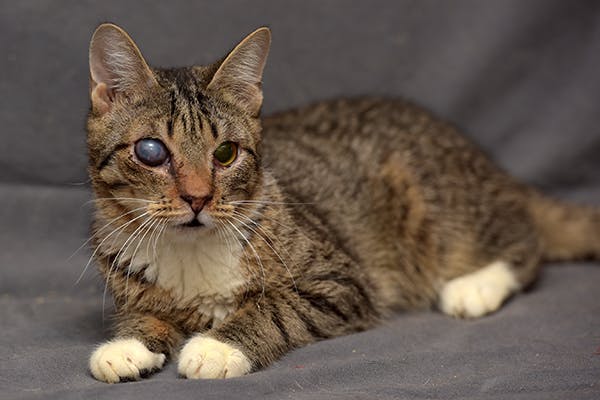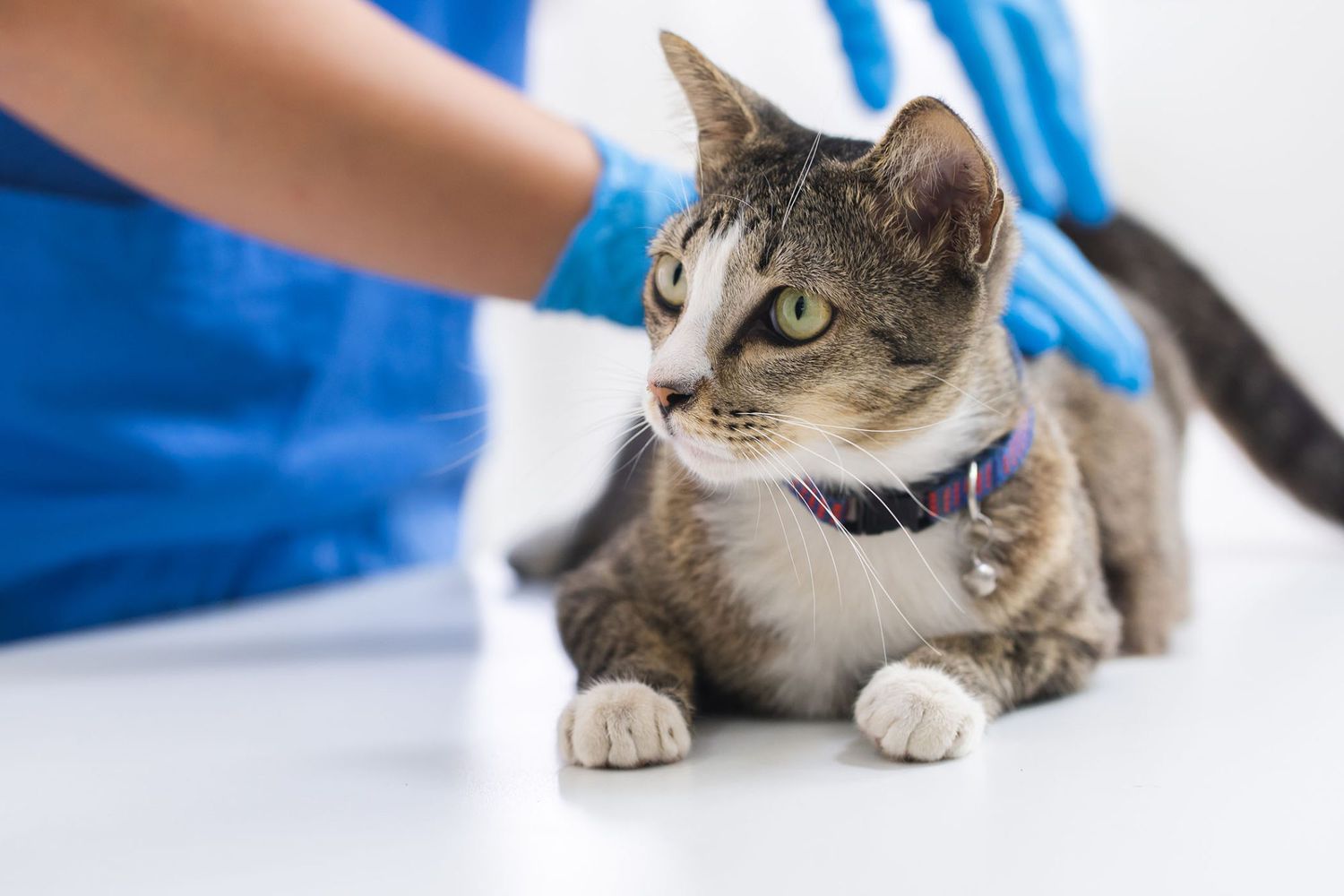Understanding the Key Changes in Elderly Cats
As cats reach their senior years, typically past the age of 10-15, owners will notice both physical and behavioral changes in their aging feline companions. It’s important for cat owners to understand the unique needs of an elderly cat in order to provide the best care during their golden years.
The Physical Effects of Aging on Cats
Aging cats go through a variety of physical changes, some more noticeable than others. Being aware of common age-related diseases and conditions can help catch problems early and improve quality of life.
Vision and Hearing Loss
As in elderly humans,

cats often develop cloudy eyes, worsening vision, and even blindness as they age. Hearing loss, while less noticeable, also occurs frequently in older cats. These sensory declines can lead to disorientation and changed behaviors.
Weight Changes
With a slowing metabolism but no decrease in appetite, most senior cats tend to gain weight more easily. Obesity can exacerbate other health issues like arthritis and heart disease. However, some elderly cats lose their appetite or have difficulty eating, leading to dangerous weight loss. Monitoring your cat’s weight helps detect problems.
Dental Disease
By age 3, 70% of cats have some form of dental disease. This number only climbs as they age. Untreated dental infections negatively impact overall health. Regular dental cleanings and checkups catch developing issues. Missing teeth or diseased gums also cause senior cats to struggle with eating.
Arthritis
Stiff, aching joints commonly affect elderly cats due to natural cartilage breakdown. Arthritis causes observable limping, difficulty jumping onto furniture, and overall decreased activity levels. Managing arthritis through exercise, joint supplements, medication, and proper bedding improves quality of life.
Common Age-Related Illnesses in Cats
While cats can develop various medical conditions as they age, four stand out as most prevalent in geriatric felines. Being aware of the symptoms means early intervention and better outcomes.
Chronic Kidney Disease
By age 15, more than half of cats suffer

chronic kidney disease. As kidneys fail, toxins build up in the bloodstream. This causes symptoms like increased thirst/urination, weight loss, vomiting, diarrhea, and bad breath. Managing kidney disease through diet, fluids, and medication slows progression.
Hyperthyroidism
One of the most common disorders in older cats, hyperthyroidism stems from abnormal thyroid gland function. Symptoms include sudden weight loss, increased appetite, hyperactivity, vomiting, and fast heart rate. Medications control thyroid levels, but advanced cases may require radioactive iodine treatment or surgical removal of the gland.
Heart Disease
As with humans, heart disease prevalence increases significantly in senior cats. The most common condition, cardiomyopathy, involves thickened heart muscle and chamber enlargement. Warning signs involve coughing, labored breathing, and exercise intolerance. Various medications help manage heart disease once diagnosed through x-rays, ultrasounds, and EKGs.
Cancer
Cancer diagnoses become exponentially more common over the age of 10. Lymphoma, mammary tumors, skin cancer, and feline leukemia virus often strike senior cats. Symptoms relate to the cancer type and location. Treatments like chemotherapy, radiation, and steroids aim to slow progression and ease discomfort when cancers reach advanced stages. Regular vet checks identify new lumps, bumps, and abnormalities for early intervention.
Behavior and Personality Changes
In addition to physical transformations, elderly cats undergo mental and emotional changes as well. Patience with age-related behaviors, plus awareness of certain warning signs, prevents inappropriate reactions.

Increased Vocalization
Senior cats often meow more frequently due to cognitive decline, anxiety when owners leave rooms, or attention seeking. Understanding the reason for the vocalization prevents inadvertently reinforcing unwanted meowing. Providing company, affection, or toys when crying stems from loneliness typically helps curb vocal behavior.
Clingy Behavior
As cats age, it’s common for previously independent animals to suddenly display clingy, attention-seeking actions like constantly following owners around and demanding to be held or petted. While sometimes stemming from medical issues like failing senses, much clingy behavior links to comfort seeking as older cats confront their mortality. Giving ample love and affection reassures frightened senior pets.
Nighttime Yowling/Vocalization
Another common senior cat behavioral issue involves noisy meowing or yowling at nighttime. Disorientation from worsening eyesight and hearing in the dark, declining cognitive function, and increasing reliance on owners for security all drive bothersome night vocalizations. Adjusting sleeping arrangements to keep elderly cats nearby, plus medication in extreme cases, reduces disruptive night yowling substantially.
Litter Box Problems
Between 30-50% of cats aged 14 and up experience litter box issues ranging from inappropriate urination to defecating outside boxes. Various factors including mobility challenges, current or recurring UTIs, kidney troubles, loss of bowel control, and cognitive decline cause litter box problems. Patience combined with vet checks ensure medical issues don’t underlie accidents. Strategically placed extra boxes, synthetic grass pads, and urine deterrents help contain the damage from leaks.
Tips for Supporting Elderly Cat Care Needs
Caring for senior cats requires some adjustments from their middle-age needs. Making a few small but meaningful changes keeps elderly cats healthy and content.
More Frequent Vet Visits
To catch emerging conditions early,

geriatric cats need vet exams every 6 months instead of once a year. Running routine bloodwork, urine cultures, thyroid levels, and blood pressure in addition to physicals gives vets baseline indications of organ changes. Senior wellness screenings ultimately save owners money over missing disease onset.
Diet Modifications
From switching to wet food for better hydration to feeding renal diets for kidney troubles, nutritional adjustments serve senior cats well. Controlling calories protects against obesity while ensuring adequate nutrition intake if appetites decrease. Raised bowls and multiple feeding stations prevent mobility challenges from hindering eating.
Comfort and Safety Proofing
Elderly cats appreciate environment modifications like pet steps for reaching beds and litter boxes, nightlights to improve poor vision, orthopedic beds providing joint support, litter pads facilitating mobility in and out of boxes, grippable rugs preventing slips on floors, and scratching posts to stretch stiff limbs. Keeping favored resting spots easily accessible prevents frustrating environment struggles.
Maintaining Mental Stimulation
Although movement slows down, mental exercise remains important for senior cats so introducing new toys on rotation and allotting play time prevents cognitive decline and boredom. Cat trees with different levels encourage climbing activity without overtaxing joints. Food puzzle games provide mental stimulation at chow time. Engaging elder felines’ brains maintains quality of life and fun despite physical setbacks.
Frequently Asked Questions About Elderly Cats
Caring for an aging cat leaves many owners full of questions about the road ahead. See below for answers to some commonly asked questions:
What age is a cat considered “elderly”?
Vets declare cats senior citizens starting around 10-15 years old depending on breed size. Smaller cats trend toward the older end of the range.
Do cats get dementia?
Cats can develop a version of dementia called cognitive dysfunction syndrome displaying symptoms like indoor accidents, changes in sleep cycles, anxiety, and vocalization from disorientation. Medications help slow mental decline.
Why has my elderly cat started meowing all night long?
Excessive night vocalization often indicates age-related cognitive decline, deteriorating senses exacerbated by darkness, or developing separation anxiety and reliance on owners at night. Adjusting sleeping arrangements and using supplements minimizes disruptive night meowing.
Are diabetes common in senior cats?
Obesity puts aging cats at increased risk for feline diabetes. Warning signs involve increased thirst/urination, increased appetite, and weight loss. Twice yearly bloodwork checks for high glucose to get early treatment including diet regulation, oral medication, and insulin injections in severe cases.
The Joys and Challenges of Caring for Older Cats
While undoubtedly rewarding, caring for senior cats requires Meeting increased vet needs, adjusting home environments, noticing emerging health issues sooner, and exercising more patience with age-related behavior changes allows owners to provide good quality of life for their elder feline companions. Staying on top of physical and mental shifts better equips owners to support their cats through the senior years. With some thoughtful modifications, aging kitty family members continue enjoying their golden years for long stretches. Embracing the slower pace lets owners deeply cherish the special bond with their elderly cats.

